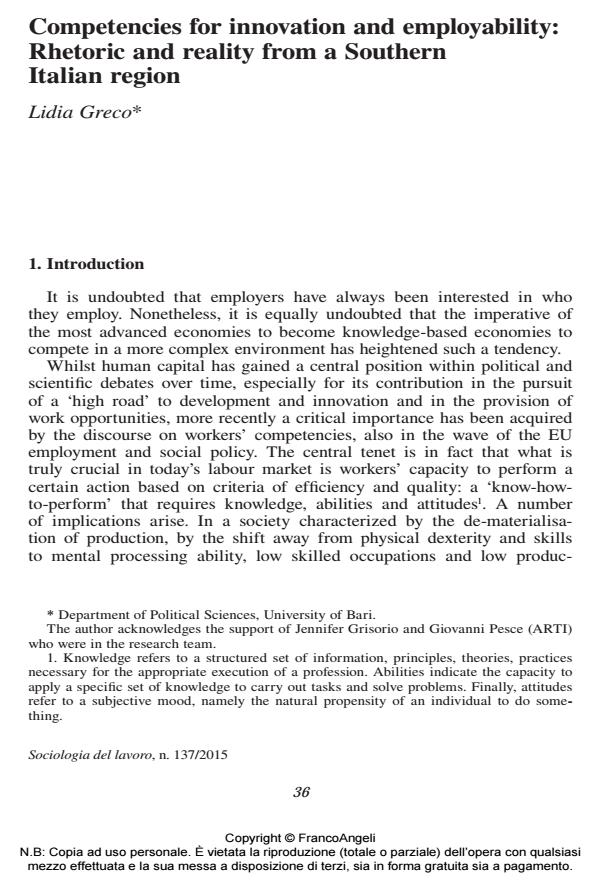Competencies for innovation and employability: Rhetoric and reality from a Southern Italian region
Journal title SOCIOLOGIA DEL LAVORO
Author/s Lidia Greco
Publishing Year 2015 Issue 2015/137
Language English Pages 22 P. 36-57 File size 241 KB
DOI 10.3280/SL2015-137003
DOI is like a bar code for intellectual property: to have more infomation
click here
Below, you can see the article first page
If you want to buy this article in PDF format, you can do it, following the instructions to buy download credits

FrancoAngeli is member of Publishers International Linking Association, Inc (PILA), a not-for-profit association which run the CrossRef service enabling links to and from online scholarly content.
Whilst human capital has gained a central position within political and scientific debates over time, more recently a critical importance has been acquired by the discourse on workers’ competencies. The central tenet is that what is truly crucial in today’s labour market is workers’ know-how-to-perform that requires knowledge, abilities and attitudes. A number of implications arise for workers, who are encouraged to gain especially transversal competencies, and for policy makers alike, who consider employability as the new job security. Starting from the empirical evidence arising from a large-scale survey carried out on Apulian small and medium enterprises (SMEs), the article critically discusses questions concerning the rhetoric of competencies. In contrast to prevailing individualized accounts of competencies and skill requirements, focusing on workers rather on workers in organizations and in labour markets, it first points attention to their social construction and, then, it engages with the debate on employability in knowledge-based economies.
Keywords: Competencies, employability, innovation, Apulian companies
Lidia Greco, Competencies for innovation and employability: Rhetoric and reality from a Southern Italian region in "SOCIOLOGIA DEL LAVORO " 137/2015, pp 36-57, DOI: 10.3280/SL2015-137003